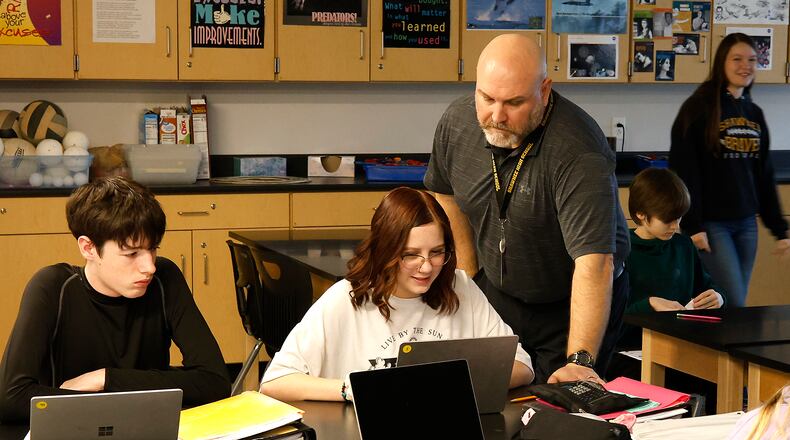“Offering our community exceptional educational opportunities has been and continues to remain a priority for each and every person serving the students of Springfield Twp.,” Kuhn said. “One element that cannot be captured is the unwavering commitment and dedication of each and every Clark-Shawnee employee to serving the best interests of our students. We are grateful for the families that entrust their students to us and it is a responsibility that we as a district do not take lightly.”
Several of the underlying measures on Clark-Shawnee’s report card were slightly lower in 2023-24 than the year before. The district fell from 4 stars to 3 in gap closing, which measures performance among different student demographics, and fell from 3 stars to 2 in grade K-3 literacy measures. The district’s overall performance index on state tests was a hair lower at 78.6 after a 79.1 in 2022-23.
Kuhn acknowledged some scores were down from last year, but pointed out other metrics were up.
“The percentage of students performing at proficient and accomplished levels is the highest it has been since the pandemic,” he said. “Furthermore, the number of students performing at the basic level is the lowest we have seen since 2019.”
In the year-over year progress component, which Kuhn said is the area they “celebrate the most,” Clark-Shawnee scored 4 out of 5 stars for the second year in a row, one of the highest marks in Clark County. The district also got 4 stars for graduation rates, with the four-year rate at 95.0% and the five-year rate at 96.7%.
Kuhn said a majority of students graduate in four years, and the state includes the five-year graduation measure because “there are often legitimate reasons” why a student doesn’t graduate in four years but will do so in five. For example, he said they have students with special needs that continue academic programming through Springfield-Clark CTC and Project Search who eventually receive their diplomas in that five-years.
Most districts’ college-career ready score rose in the 2023-24 version of the report card, and Clark-Shawnee was no different, going from 41.8% to 75%, also the highest in the county.
Clark-Shawnee got 3 stars in the achievement area, which is a fairly straight measure of state test performance. Three stars means meeting state standards. That was the district’s grade in gap closing as well.
Asked about the drop to a 2-star rating early literacy, Kuhn said with the implementation of new early literacy initiatives, his team “has seen and will continue to see student growth in the area of reading that can only be described as exciting.”
“Our improved approaches to teaching students how to read and the dedication of our teachers to ongoing professional development will result in more students experiencing success in the area of early literacy,” he said.
One area of concern that stands out to Kuhn is that 23.5% of students were considered chronically absent. By the state’s definition, that means missing 10% or more of classroom time. To miss 10% of the year, a student would have to be absent the equivalent of roughly two school days every month.
“This means that almost one-quarter of our students missed 10% of instructional time regardless of whether the absence was excused or unexcused,” Kuhn said. “We are beginning to have conversations on ways to improve student attendance because being present at school is essential to learning.”
The Ohio Department of Education and Workforce’s “high-level” data report for each school district’s report card includes 16 different metrics related to test score performance, year-over-year progress, early literacy and other factors. Clark-Shawnee’s report card this year showed improvement on two of those markers, no change on four measures, and declines (usually slight) on 10 of them.
Kuhn said the district continues to review data to find areas where students need additional support to close learning gaps and increase student achievement.
About the Author



